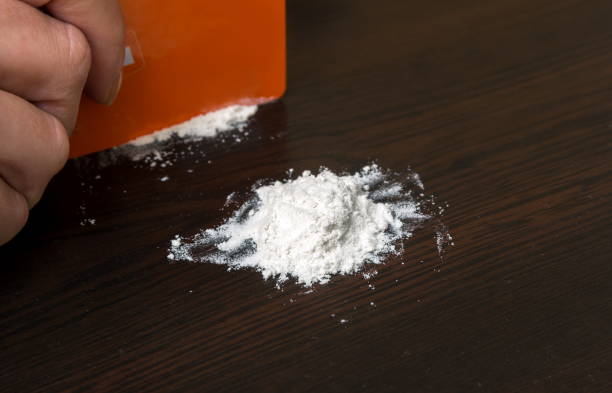Talcum Powder and Its Potential Link to Cancer: What You Need to Know
Talcum powder, derived from the mineral talc, has been a staple in personal care products for decades. Its moisture-absorbing properties make it a common ingredient in baby powders, cosmetics, and hygiene products. However, growing concerns have emerged regarding the potential health risks associated with prolonged use of talcum powder, especially in the genital area. Studies have suggested a possible link between talcum powder and ovarian cancer, leading many consumers to consider legal action.

Ready to connect with top legal professionals? Get immediate support— Call us at 877-550-8911.
Connect with Our Legal Team
Scientific Studies Highlighting the Risks
Scientific research has revealed that talcum powder used in the genital area may increase the risk of ovarian cancer. A study published in the American Journal of Epidemiology indicated that women who used talcum powder in this region were at a higher risk of developing ovarian cancer. Additionally, the International Agency for Research on Cancer (IARC) classified talc containing asbestos as a carcinogen. While most cosmetic talcum powders are asbestos-free, the risk of contamination during the mining process remains a concern.
Even asbestos-free talc has raised red flags. In a 2020 study by the Journal of the American Medical Association (JAMA), researchers analyzed data from over 250,000 women and found a slight increase in ovarian cancer cases among those who used talcum powder regularly. These findings have fueled growing litigation against manufacturers, with thousands of claims filed alleging that companies failed to warn consumers about potential health risks.
Can You File a Claim for Talcum Powder Cancer?
If you or a loved one has been diagnosed with ovarian cancer or mesothelioma after prolonged use of talcum powder, you may be eligible to file a claim. Filing a claim involves demonstrating a clear link between your diagnosis and talcum powder use. Key factors to consider when pursuing a claim include:
1. Medical Documentation
To establish a solid foundation for your case, medical records indicating a cancer diagnosis are essential. These records should specify the type of cancer, such as ovarian cancer or mesothelioma, which has been linked to talcum powder exposure.
2. Product Usage History
Documenting your talcum powder usage, including the brand, duration, and frequency, is vital. If possible, retain product packaging or receipts as evidence. This information will help establish a timeline and strengthen your claim.
3. Legal Precedents and Expert Testimony
Familiarizing yourself with previous successful claims can offer valuable insights. Additionally, expert testimonies from medical professionals or toxicologists can bolster your case by explaining how talc exposure may have contributed to your condition.
For more information on legal proceedings related to product liability cases, visit
Legal Case Review.
Acting promptly is crucial, as statutes of limitations apply to product liability cases. These time limits vary by state, so consulting an experienced attorney ensures you do not miss critical deadlines.
Legal Grounds for Filing a Claim: Key Considerations
Filing a claim for talcum powder cancer typically falls under product liability law. This legal framework holds manufacturers accountable for producing and selling defective or harmful products without providing adequate warnings. To establish a strong case, you must prove the following:
1. Failure to Warn Consumers
Manufacturers have a legal obligation to inform consumers about potential risks associated with their products. If a company knew or should have known about the risks of talcum powder but failed to provide adequate warnings, it could be held liable.
2. Causation Between Talc and Cancer
Establishing causation requires demonstrating that your cancer diagnosis is directly linked to talcum powder use. Medical records, product usage history, and expert opinions play a significant role in establishing this connection.
3. Negligence or Misconduct
If a manufacturer knowingly allowed contaminated or unsafe products to reach the market, this constitutes negligence. In cases of gross negligence or intentional misconduct, victims may also be entitled to punitive damages, which are intended to punish the company and deter similar conduct in the future.
Steps to Take Before Filing a Claim for Talcum Powder Cancer
Before initiating a claim, it is essential to take specific steps to strengthen your case. Proper preparation can significantly impact the success of your claim.
1. Consult a Healthcare Professional
Obtain a professional medical evaluation to confirm your diagnosis and discuss potential links to talcum powder use. This documentation will be pivotal in demonstrating the impact of talcum powder on your health.
2. Gather Comprehensive Evidence
Compile a detailed history of your talcum powder usage. Include product names, frequency of use, and duration. If you have retained packaging, receipts, or any related documentation, these items can serve as critical evidence.
3. Seek Legal Expertise
Engage a legal expert specializing in product liability and talcum powder litigation. An attorney can help gather necessary documentation, evaluate the strength of your claim, and guide you through the legal process.
4. Be Aware of Time Limits
Product liability claims are subject to statutes of limitations, which vary by state. Acting within the specified time frame is essential to preserve your right to seek compensation.
Evidence Required to Support Your Claim
To strengthen your claim, gathering the right evidence is crucial. The following types of evidence can significantly enhance your case:
1. Medical Records
Detailed medical records confirming your diagnosis, treatment history, and prognosis are vital. These documents establish the link between your condition and talcum powder exposure.
2. Product Usage History
Providing evidence of consistent talcum powder use over time supports your claim. This information should include product brands, duration of use, and application frequency.
3. Expert Testimony
Testimony from medical experts or toxicologists can explain the connection between talcum powder and cancer. These experts can also discuss how talc particles may have contributed to the development of your illness.
4. Proof of Purchase
Receipts, packaging, or purchase records demonstrate that you used specific talcum powder products. This evidence can be critical in linking your use to the manufacturer.
This evidence will strengthen your case and improve your chances of securing compensation.
For additional scientific studies on talc and cancer risks, visit
American Cancer Society.

Potential Compensation for Victims of Talcum Powder Cancer
Victims who file successful claims may be entitled to compensation that covers various damages. The type and amount of compensation depend on several factors, including the severity of the illness, medical expenses, and emotional distress.
1. Medical Expenses
Compensation can cover current and future medical costs, including surgeries, treatments, and medications related to your diagnosis.
2. Lost Wages and Income
If your condition has affected your ability to work, compensation may include lost wages and diminished earning capacity.
3. Pain and Suffering
Emotional distress and the physical pain associated with cancer treatment may be factored into your compensation.
4. Punitive Damages
In cases where manufacturers acted negligently or maliciously, courts may award punitive damages to penalize the company and prevent future misconduct.
FAQs
1. Who Can File a Claim for Talcum Powder Cancer?
Individuals diagnosed with ovarian cancer or mesothelioma after prolonged use of talcum powder may be eligible to file a claim. Family members of deceased victims may also file wrongful death claims.
2. How Long Do I Have to File a Claim?
The time limit, known as the statute of limitations, varies by state. It typically ranges from one to three years from the date of diagnosis or discovery of the link to talcum powder.
3. What Types of Compensation Can I Receive?
Compensation may cover medical expenses, lost income, pain and suffering, and, in some cases, punitive damages.
4. Do I Need an Attorney to File a Claim?
Yes, consulting an attorney experienced in talcum powder litigation is highly recommended. They can navigate complex legal processes and improve your chances of success.
5. Are There Any Ongoing Class Action Lawsuits?
Yes, multiple class action and mass tort lawsuits have been filed against major talcum powder manufacturers. An attorney can determine whether joining an existing lawsuit or filing an individual claim is more beneficial for your situation.
Don’t wait to secure the legal representation you deserve. Visit Legal Case Review today for free quotes and tailored guidance, or call 877-550-8911 for immediate assistance.





